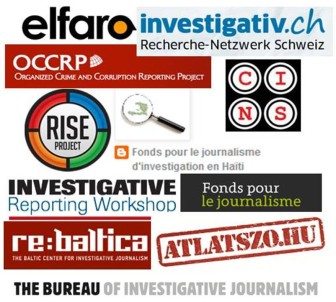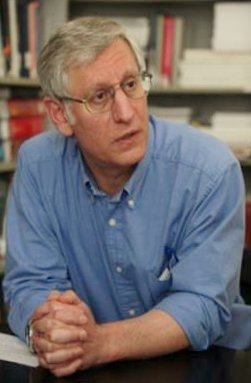One of the bright spots in investigative journalism over the past decade has been the rapid spread of nonprofits dedicated to supporting in-depth journalism around the world. A 2012 survey by the Center for International Media Assistance (CIMA) identified 106 investigative journalism nonprofits in nearly 50 countries – with more than half of them founded in the past five years.
The list includes nonprofit newsrooms, online publishers, professional associations, grant-making funds, NGOs, training institutes, and academic centers. About half are based in the United States, where the  hollowing out of traditional media has sparked the founding of dozens of these nonprofit newsrooms at the state and local level. Moreover, the trend does not appear to be abating. New reporting centers or funds are being planned or seriously considered not only in the United States but in India, the Netherlands, Norway, Portugal, and Zambia.
hollowing out of traditional media has sparked the founding of dozens of these nonprofit newsrooms at the state and local level. Moreover, the trend does not appear to be abating. New reporting centers or funds are being planned or seriously considered not only in the United States but in India, the Netherlands, Norway, Portugal, and Zambia.
That’s the good news.
The bad news? They’re not all going to last.
“While the growth in nonprofit newsrooms globally is an exciting development, the lack of sustainable funding means that many of these organizations will be forced to close once initial money runs out,” says Kevin Davis. executive director of the Investigative News Network, an association of more than 80 nonprofit media groups based in North America. “These are similar to the challenges we see facing nonprofit newsrooms in the States, except here there is a tradition of philanthropy that doesn’t exist in many parts of the world.”
What that means, say management experts, is that those in start-up mode need to do some hard-headed analysis about market conditions, funding, and sustainability. As a first step, anyone hoping to launch an investigative journalism center should do a careful assessment of whether conditions are right for a new nonprofit. Despite their growing popularity, the nonprofits are not always an appropriate model. Several organizations are dormant or no longer in operation, including groups in Bulgaria, Haiti, Mexico, and Timor.
The reasons for their failure are varied–lack of funding, lack of fundraising, managerial problems, small and uncompetitive markets, poor editorial standards. An innovative program in Tbilisi, Georgia, run by ICFJ and the Eurasia Foundation, created the Caucasus Investigative Reporting Center and trained more than 20 reporters in investigative techniques during 2005-06. Initial funding came from the State Department and the British government’s Global Conflict Prevention Pool, as well as from ICFJ’s Knight program. Despite the program’s success, a lack of support left the Center “in suspended animation,” according to former program director Jody McPhillips.
Similar programs come and go, abandoned when funding runs out. Donors’ attention spans – and funding cycles – are notoriously short, so a long-term strategy is essential.

PCIJ Co-founder Coronel: “You need local buy-in.”
Sheila Coronel, co-founder of the Philippine Center for Investigative Journalism, is wary of programs that are top-down attempts to instill an investigative culture into a nation’s news media. “Local journalists should be willing to make this happen,” said Coronel, now director of the Stabile Center for Investigative Journalism at Columbia University’s Graduate Journalism School. “You need local buy-in. There’s no assurance your stories will be published or that you’ll steer clear of the law. It requires genuine commitment–and you can’t program that from Washington.” A more effective strategy in some countries, such as Bangladesh, may be to work directly with receptive news outlets through targeted grants or a mentorship program. “In some places it would not work,” Coronel added, “but it might as a unit within a newspaper, where you have an enlightened editor or publisher who’s interested.”
William Orme of the United Nations Development Programme’s Human Development Report Office likewise warns of inapplicable models, particularly where basic journalism skills are lacking and the legal environment is onerous. Orme calls for more support to investigative reporting, but says the conditions must be right. “There’s a totally different dynamic” in parts of Africa, he cautioned. “You can’t do investigative reporting in a country that has enforced criminal libel statutes on the books.”
A reporting center will not be practical in many places. The Philippine Center, considered by many to be a model, has lasted nearly a quarter century due to various factors, including a reformed legal environment, a lively and competitive press, public support, high standards, strong leadership, and a small but critical endowment.
 As an alternative, donors and local journalists should consider the investigative journalism fund model. This requires less overhead than a fully staffed reporting center, and it can leverage local media resources by providing grants or matching funds to let editors and reporters develop project-length stories. Eighteen of the centers surveyed by CIMA make grants to outside reporters to do investigative projects. This could be expanded, and non-partisan NGOs such as open government groups could be used as a base. The challenge is ensuring high editorial standards. It is not enough to simply dole out grants to promising projects and reporters, say veteran investigative journalists. Funding should be allocated so that a professional editor with global standards is working as a coach and mentor, and can follow the reporter from story inception to publication or broadcast.
As an alternative, donors and local journalists should consider the investigative journalism fund model. This requires less overhead than a fully staffed reporting center, and it can leverage local media resources by providing grants or matching funds to let editors and reporters develop project-length stories. Eighteen of the centers surveyed by CIMA make grants to outside reporters to do investigative projects. This could be expanded, and non-partisan NGOs such as open government groups could be used as a base. The challenge is ensuring high editorial standards. It is not enough to simply dole out grants to promising projects and reporters, say veteran investigative journalists. Funding should be allocated so that a professional editor with global standards is working as a coach and mentor, and can follow the reporter from story inception to publication or broadcast.
Regardless of the model, funding remains critical to the nonprofits’ success. As a group, they are heavily dependent on donors–84 percent of the CIMA respondents cited grants and donations as their major source of income, followed by story fees and membership and conference fees at 11 percent each, and teaching and training at 9 percent. Even the best-run, most entrepreneurial centers have to fundraise for more than half of their budget, much like other NGOs.
Key to the early success of the Bosnian Center for Investigative Reporting, for example, was a three-year, $1.8 million grant from USAID in 2004. The Philippines center received a Ford Foundation endowment that provides as much as 30 percent of that center’s annual budget. Asked to rank what kind of assistance is most important to them, the various center respondents listed two kinds of funding at the top of the list, well ahead of such priorities as legal and physical protection, training, and equipment.
Given the rapid growth of these centers, donors have raised the obvious question of how sustainable they are. The amount of funding available is not large, and new donors have not appeared in substantial numbers. At the same time, the number of groups is growing, and many appear overly dependent on grants from international aid agencies and the Open Society Foundations. In CIMA’s survey, just over half of the responding groups (53 percent) reported having a sustainability plan in place. Some observers believe that the large number of nonprofit groups is in fact not sustainable – funders will lose interest or be forced to cut back on grant-making. Pressure on Western governments to pare budgets may affect international assistance, for example, while poor yields on foundation investment portfolios can rein in private giving.
The answer, say nonprofit management experts, is to diversify revenue and expand the pool of donors. The model is not new. The original Center for Investigative Reporting during the late 1980s had contracts with CBS’s 60 Minutes program and the San Francisco NBC News affiliate, built a production studio to co-produce documentaries with the Public Broadcasting System’s Frontline series, did day-rate work for foreign news media, syndicated its print work, and charged for newspaper and magazine stories. By 1989, CIR produced 40 percent of a $1.5 million budget through commercial fees.
Such an entrepreneurial approach is fast-catching on at U.S. nonprofits, who see donors losing interest in media as rapidly as they gained it. A number of groups, such as MinnPost, the Texas Tribune, and the Voice of San Diego, are scrambling to diversify their revenue streams, with positive results–and there are lessons for their counterparts overseas. Among the means of revenue: individual donors, commercial media fees, membership dues, online “crowd-funding,” university affiliations, events and benefits, database vending, newsletter subscriptions, and training and teaching. In the United States, the Investigative News Network maintains a growing library of resources on sustainability best practices for nonprofits.
For enterprising managers, there is a full menu of methods to choose from:
Better fundraising. Few groups can afford the kind of development professionals who work in the big U.S. nonprofits. Those developing local funding sources, moreover, can face major obstacles: a lack of philanthropic traditions and economic incentives to donate, and attempts by powerful political and economic interests to influence coverage. But many groups appear relatively unsophisticated in fundraising and could do much to improve and diversify their donor base. One important measure is better research on potential donors–both government and private. Many groups lack even a “DONATE” button on their websites or mailing lists to appeal for contributions. In Latin America several nonprofits have been successful in finding independent, local backers, while groups in Eastern Europe have tapped into expatriate communities for support. In the CIMA survey, the major sources of funding cited most by responding groups were, in order, private foundations, the EU and its member governments, the U.S. government, and private individuals. Only 26 percent cited individual donors as a significant source, suggesting that this is a potential area of growth.
Commercial media fees. Many of the nonprofits give away their stories, a response to the controversial nature of their reporting and pressure from donors to maximize impact. But commercial fees from news media can make a substantial contribution to a nonprofit’s budget. Television news programs tend to pay particularly well and are widely watched. Doing contract work for foreign media can also be lucrative, and some groups are considering setting up a unit to do day-rate work for visiting reporters, helping on documents, research, and reporting.
Training and teaching. Training journalists and students in investigative techniques can be an important source of revenue. In the CIMA survey, 84 percent reported that they are already engaged in training. Affiliation with a university can also help, through teaching fees, subsidized office space, cheap or free student labor, and institutional protection. The survey found that 27 percent of the groups were affiliated with a university.
Membership dues and newsletters. Offering memberships for a reasonable fee could bring in needed income. Members could receive a regular newsletter, briefings by staff members, and early announcements of major stories. Writing a subscription-only “insider” newsletter, offered at a premium to interested clients, could also raise needed funds.
Events and benefits: Some nonprofits hold regular events, such as public forums and lectures by famous speakers, as benefits for the organization.
Crowd-funding: Sites like Kickstarter and Indiegogo allow enterprising groups to fundraise online, and there are signs that the practice will only increase. By using social media, crafting clever pitches, and offering important, attractive projects, media professionals have raised tens of thousands of dollars through these sites. See GIJN’s resource page on crowdfunding for more information.
See also part two of this series, Nonprofit Newsroom Survival Guide, with an infographic exploring types of revenue for nonprofit groups.
 David E. Kaplan is director of the Global Investigative Journalism Network secretariat. He is former editorial director of the Center for Public Integrity, a senior editor at the Center for Investigative Reporting, and chief investigative correspondent for U.S. News & World Report. Excerpted from Global Investigative Journalism: Strategies for Support, Center for International Media Assistance.
David E. Kaplan is director of the Global Investigative Journalism Network secretariat. He is former editorial director of the Center for Public Integrity, a senior editor at the Center for Investigative Reporting, and chief investigative correspondent for U.S. News & World Report. Excerpted from Global Investigative Journalism: Strategies for Support, Center for International Media Assistance.

